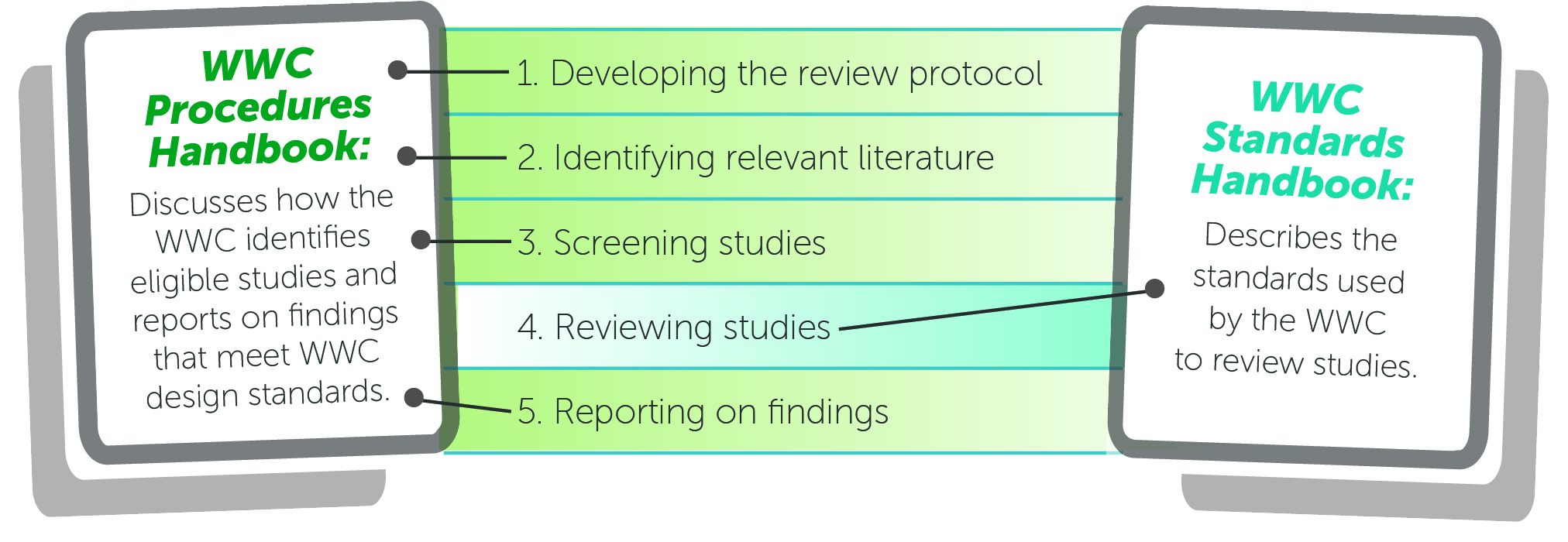By Chris Weiss and Jon Jacobson
For the What Works Clearinghouse (WWC), standards and procedures are at the foundation of the WWC’s work to provide scientific evidence for what works in education. They guide how studies are selected for review, what elements of an effectiveness study are examined, and how systematic reviews are conducted. The WWC’s standards and procedures are designed to be rigorous and reflective of best practices in research and statistics, while also being aspirational to help point the field of education effectiveness research toward an ever-higher quality of study design and analysis.
To keep pace with new advances in methodological research and provide necessary clarifications for both education researchers and decision makers, the WWC regularly updates its procedures and standards and shares them with the field. We recently released Version 4.0 of the Procedures and Standards Handbooks, which describes the five steps of the WWC’s systematic review process.
For this newest version, we have divided information into two separate documents (see graphic below). The Procedures Handbook describes how the WWC decides which studies to review and how it reports on study findings. The Standards Handbook describes how the WWC rates the evidence from studies.

The new Standards Handbook includes several improvements, including updated and overhauled standards for cluster-level assignment of students; a new approach for reviewing studies that have some missing baseline or outcome data; and revised standards for regression discontinuity designs. The new Procedures Handbook includes a revised discussion of how the WWC defines a study. All of the changes are summarized on the WWC website (PDF).
Making the Revisions
These updates were developed in a careful, collaborative manner that included experts in the field, external peer review, and input from the public.
Staff from the Institute of Education Sciences oversaw the process with the WWC’s Statistical, Technical, and Analysis Team (STAT), a panel of highly experienced researchers who revise and develop the WWC standards. In addition, the WWC sought and received input from experts on specific research topics, including regression discontinuity designs, cluster-level assignment, missing data, and complier average causal effects. Based on this information, drafts of the standards and procedures handbooks were developed.
External peer reviewers then provided input that led to additional revisions and, in the summer, the WWC posted drafts and gathered feedback from the public. The WWC’s response to some of the comments is available on its website (PDF).
Version 4.0 of the Handbooks was released on October 26. This update focused on a few key areas of the standards, and updated and clarified some procedures. However, the WWC strives for continuous improvement and as the field of education research continues to evolve and improve, we expect that there will be new techniques and new tools incorporated into future versions the Handbooks.
Your thoughts, ideas, and suggestions are welcome and can be submitted through the WWC help desk.